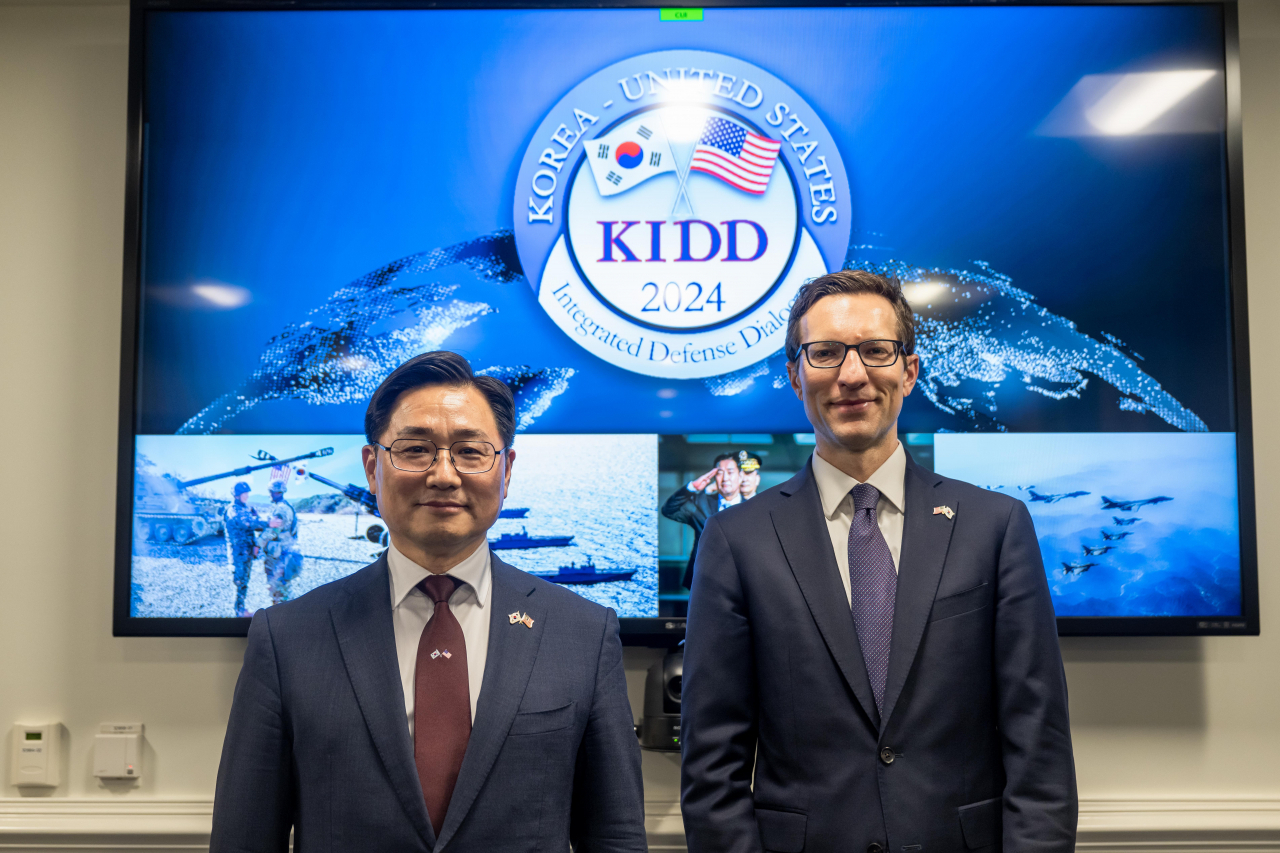South Korea, US plan exercises against North Korea nuclear use scenario
Trilateral naval exercises focus on countering North Korea’s underwater threats
By Kim ArinPublished : April 12, 2024 - 15:52

South Korea and the US have agreed to hold tabletop exercises that simulate North Korea’s nuclear weapons use to strengthen a joint response.
According to the Ministry of National Defense in Seoul on Friday, the two countries confirmed the plans at the 24th Korea-US Integrated Defense Consultative Group held in Washington on Thursday.
The meeting in Washington was attended by a South Korean delegation led by Cho Chang-rae, the deputy minister of national defense. The US delegation was led by Ely Ratner, assistant secretary of defense for Indo-Pacific security affairs; and Andrew Winternitz, acting deputy assistant secretary of defense for East Asia.
The TTX, which reflects a scenario of North Korea using nuclear weapons, was agreed upon at the last meeting of the bilateral Nuclear Consultative Group.
“South Korea and the US are committed to demonstrating the strength of our Alliance and the combined defense posture through a close and coordinated joint response to provocations, threats and activities by North Korea that undermine peace and stability in the Korean Peninsula,” the defense ministry said in a statement.
The ministry said the US “reaffirmed its commitment to defend the Republic of Korea with the full range of US military capabilities -- including nuclear, conventional, missile defense and advanced non-nuclear capabilities -- and to deploy strategic assets in a regular and visible manner.”
The US also “reiterated that any nuclear attack by the DPRK against the United States or its allies is unacceptable and will lead to the end of the Kim Jong-un regime” the ministry said.
The ministry said the two sides agreed to improve training conditions, including by sharing facilities and airspace in South Korea, and to modernize alliance capabilities by leveraging the science and technologies of both countries.
Both sides noted that the second military spy satellite launched by South Korea is an important asset for joint reconnaissance and surveillance capabilities, and agreed to continue cooperation through the Space Cooperation Working Group.
They also pledged to strengthen the United Nations Command in Korea, recognizing its “longstanding contribution to peace and stability here,” according to the ministry.
The ministry said South Korea and the US share the belief that North Korea-Russia military cooperation "undermines peace and stability in the Indo-Pacific region, including the Korean Peninsula,” and that “a trilateral cooperation with Japan was critical to achieving security goals.”
South Korea, the US and Japan conducted naval exercises Thursday and Friday at the Kadena Air Base in Okinawa with six warships from the three countries, including the Aegis destroyer Seoae Ryu Sung-ryong.
The two-day exercises were part of the trilateral plan established under the Camp David agreement reached by the leaders of the three countries.
The exercises focused on enhancing the joint response capabilities of South Korea, the US and Japan in the face of increasing nuclear and missile threats, including North Korea’s recent ballistic missile launches.
Anti-submarine drills aimed at improving the ability to counter North Korea’s underwater threats, including submarine-launched ballistic missiles, were held over the two days.
Maritime interdiction drills to prevent North Korea’s illegal transportation of weapons of mass destruction and search and rescue drills in the event of a ship in duress were also conducted.





![[KH Explains] No more 'Michael' at Kakao Games](http://res.heraldm.com/phpwas/restmb_idxmake.php?idx=644&simg=/content/image/2024/04/28/20240428050183_0.jpg&u=20240428180321)




![[Grace Kao] Hybe vs. Ador: Inspiration, imitation and plagiarism](http://res.heraldm.com/phpwas/restmb_idxmake.php?idx=644&simg=/content/image/2024/04/28/20240428050220_0.jpg&u=)









